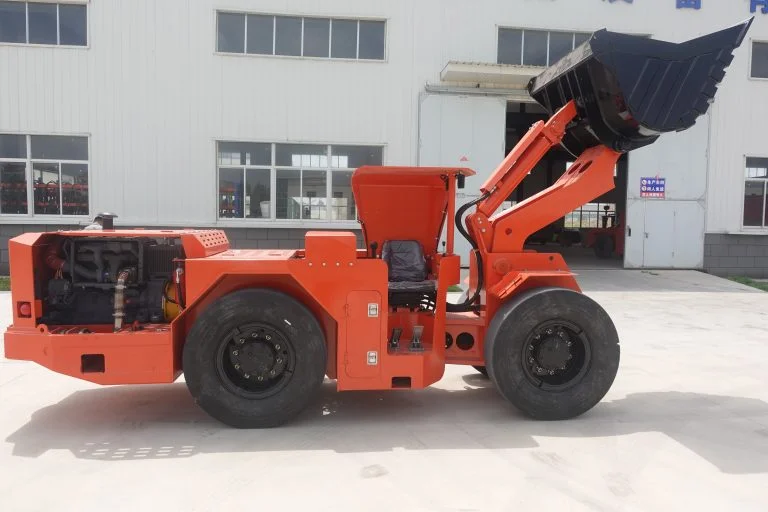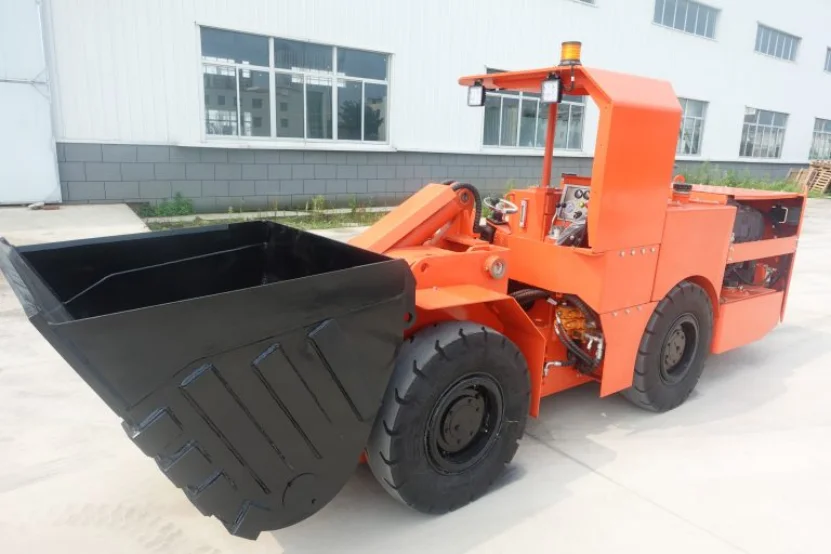Key Features of Underground Scooptrams for Extreme Conditions
The Role of Engine Power and Efficiency in Cold Environments
Running underground scooptrams in harsh settings, like mines at -40°C, demands strong engine power and effectiveness to keep work flowing smoothly. These machines boast mighty engines built to tackle the tough conditions of icy surroundings. Take the CHWJ-1H as an example. It comes with a robust transmission and torque converter. This setup boosts tonnes moved and cuts extraction costs while keeping operations steady. The design focuses on ideal width, length, and turning radius. This allows it to work well in tight vein tunnels. Such flexibility matters a lot in cold climates. Here, engine strength directly ties to output levels.
Importance of Hydraulic Systems in -40°C Operations
Hydraulic systems are vital for keeping underground scooptrams running in freezing temperatures. Models like the CHWJ-1 rely on top-notch hydraulic pumps and motors. These deliver steady performance even when it’s bitterly cold. The CHWJ-1 is packed with features to help mines increase tonnes and lower extraction expenses. Dependable hydraulics ensure that parts like lift arms and booms move without hitches. No delays or breakdowns happen due to thickened fluids or frozen pieces.
Advanced Cabin Design for Operator Safety and Comfort
In severe conditions like -40°C, keeping operators safe and at ease is critical. Today’s underground scooptrams feature cutting-edge cabin designs to meet these needs. For instance, cabins have FOPS (Falling Object Protective Structure) and ROPS (Roll-Over Protective Structure) certifications. These protect against dangers common in mining settings. The enclosed cabin keeps noise below 75 dB. This creates a safe and pleasant driving space. Plus, user-friendly layouts with simple dashboards improve comfort during long hours in tough environments.
Challenges of Operating Underground Scooptrams in -40°C Mines
Effects of Extreme Temperatures on Equipment Performance
Bitter cold can greatly affect how underground scooptrams perform. Parts like engines, hydraulics, and batteries may falter in such low temperatures. Hydraulic fluids might thicken. This can slow reactions or cause full system breakdowns if not suited for sub-zero work. Likewise, metal pieces can turn brittle after long cold exposure. This raises the chance of mechanical issues.
Maintenance Requirements in Harsh Mining Conditions
Keeping heavy equipment like scooptrams in top shape is essential in icy settings. Regular checks on hydraulics, engines, and key parts help avoid failures. Take the CHSJ-400 breakers as an example. Their design allows daily ground-level inspections with ease. All service points are simple to reach for quick upkeep routines. Lubricants and fluids must also suit cold weather. They need the right thickness to work well.
Ensuring Reliability and Durability in Low Temperatures
Dependability is a top worry when using scooptrams at -40°C. Makers use advanced tech to boost toughness in these harsh conditions. The CHWJ-6 loader stands out with its small size and automation-ready options. These ensure steady, high output at low costs per tonne. This model is a favorite in the industry for its solid build. Materials are chosen carefully. They resist damage from cold and the rough demands of mining.
Materials and Design Adaptations for Cold-Climate Mines
Use of High-Quality Alloys for Frame Durability
Working in frigid climates, like -40°C mines, calls for sturdy materials to keep underground scooptrams tough and reliable. High-grade alloys are key for building frames that handle cold-induced brittleness. These cut the risk of structural problems that could halt mining work. Makers favor alloys that resist rust from moisture, a frequent underground issue. Such materials keep machines strong and effective over time, even in brutal conditions.
Compact and Flexible Designs for Narrow Mining Tunnels
Underground scooptrams are crafted with small, adaptable designs to move easily in tight tunnels. Models like the CHWJ-1H and CHWJ-1 show this well. They’re fine-tuned for width, length, and turning radius. This lets them glide through narrow vein tunnels. These traits are vital in cold mines. Ice buildup or rock formations often shrink space there. The CHWJ-1.5 and CHWJ-2 loaders also shine with light builds and high load-to-weight ratios. They handle materials well without losing agility.
Integration of Advanced Braking Systems
Safety is a must in mining, especially in icy climates where slick surfaces add risks. Underground scooptrams feature high-tech braking systems to boost safety. Spring-applied hydraulic release brakes offer solid stopping power in tough spots. The CHWJ-4 loader has strong axles with limited slip differentials. These keep traction steady and ensure safer braking. Such systems stop accidents on steep slopes or slippery ground. They’re key for control during vital tasks.
The Role of Underground Scooptrams in Modern Mining Projects
Transporting Heavy Materials Efficiently in Challenging Conditions
Underground scooptrams are crucial for moving hefty loads smoothly in tight mine spaces. They manage big payloads while turning sharp corners with ease. This makes them vital for today’s mining efforts. The CHWJ-6 loader, for instance, pairs a 14-metric-ton capacity with automation-ready perks. It lifts productivity while keeping costs per tonne low. Known for great operator comfort and top performance, it’s a go-to choice. These advances keep material flow steady, even in freezing settings.
Supporting Mining Operations with Versatile Functionality
Underground scooptrams go beyond just hauling materials. They aid various mining tasks with their all-around skills. The CHWJ-3, for example, uses the latest LHD tech. It delivers peak performance in tough underground jobs. With a 6-metric-ton tramming capacity, it tackles different duties well. Whether clearing rubble or helping dig, these machines adjust smoothly to modern mining needs.
Contribution to Sustainable and Safe Mining Practices
Sustainability and safety shape today’s mining world. Underground scooptrams play a big part with green tech and safety-focused builds. Enclosed cabins keep noise under 75 dB. This boosts operator comfort and cuts noise pollution. FOPS and ROPS-approved setups shield workers from risks. Also, automation-ready models like the CHWJ-6 reduce human involvement. This lowers manual task dangers and improves energy use for greener results.
Frequently Asked Questions (FAQs)
1. How do underground scooptrams stay tough in -40°C mines?
High-quality alloys that resist brittleness and rust keep their structure strong in icy temperatures.
2. What makes compact designs vital for underground scooptrams?
Small builds let these machines move well in tight tunnels while still carrying big loads.
3. Why do advanced braking systems matter in cold-climate mining?
They give dependable stopping power on icy ground, making operations safer.
4. How do underground scooptrams aid sustainability?
Automation-ready features and quiet cabins promote eco-friendly work while keeping operators at ease.
Yantai Chi Hong Machinery Co., Ltd. offers custom solutions for varied mining needs in tough settings. With 12 years of know-how in underground mining gear, their innovative products stand out. Contact us today for more details!








